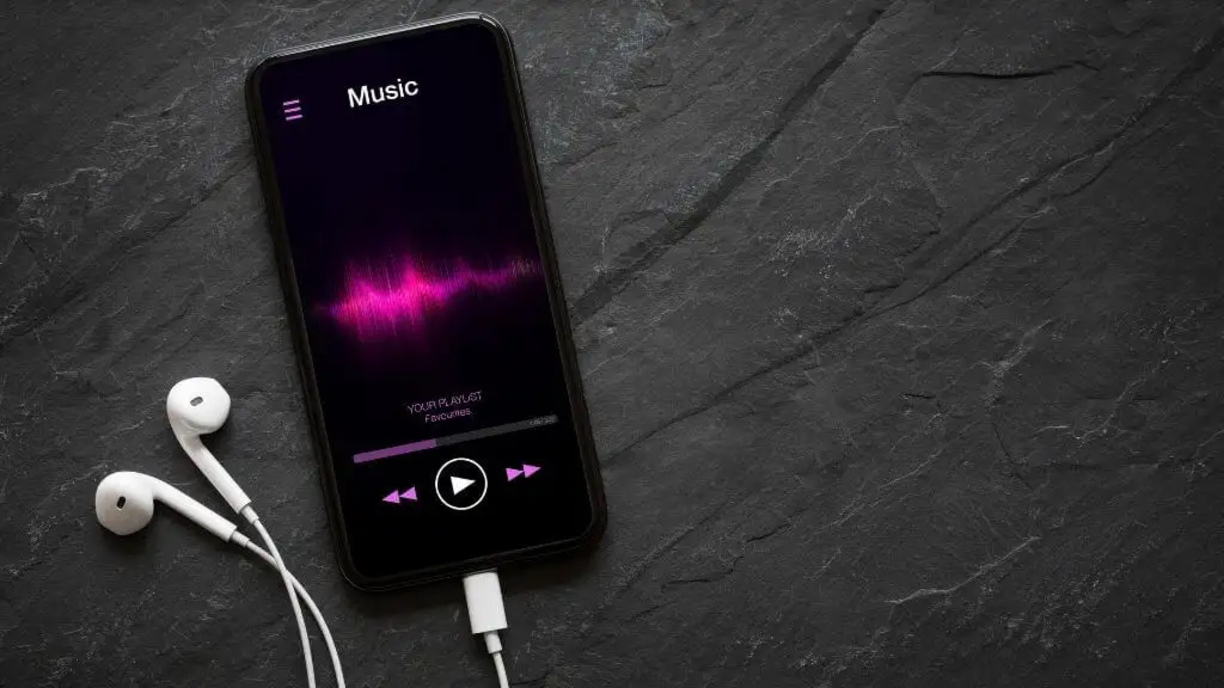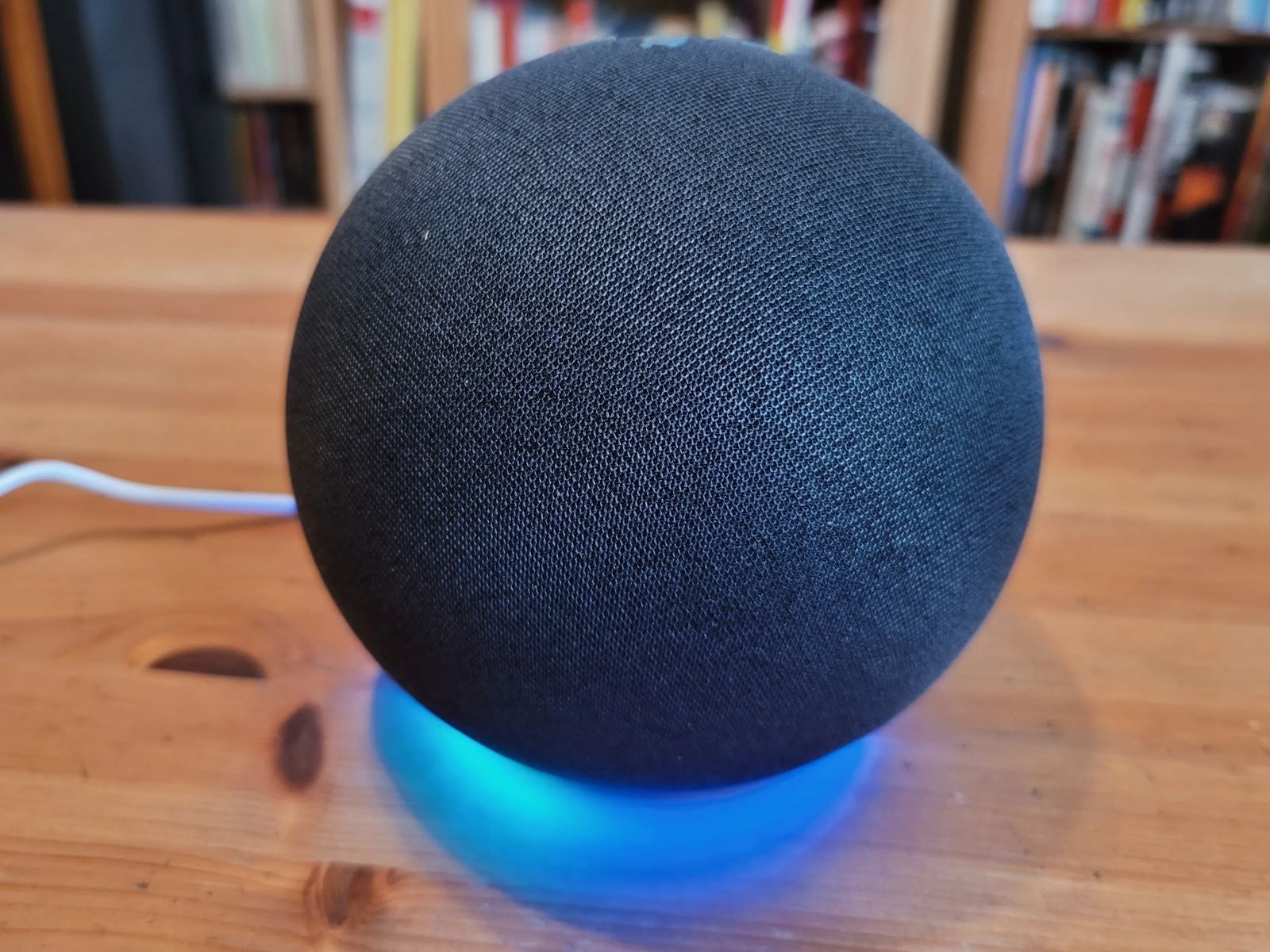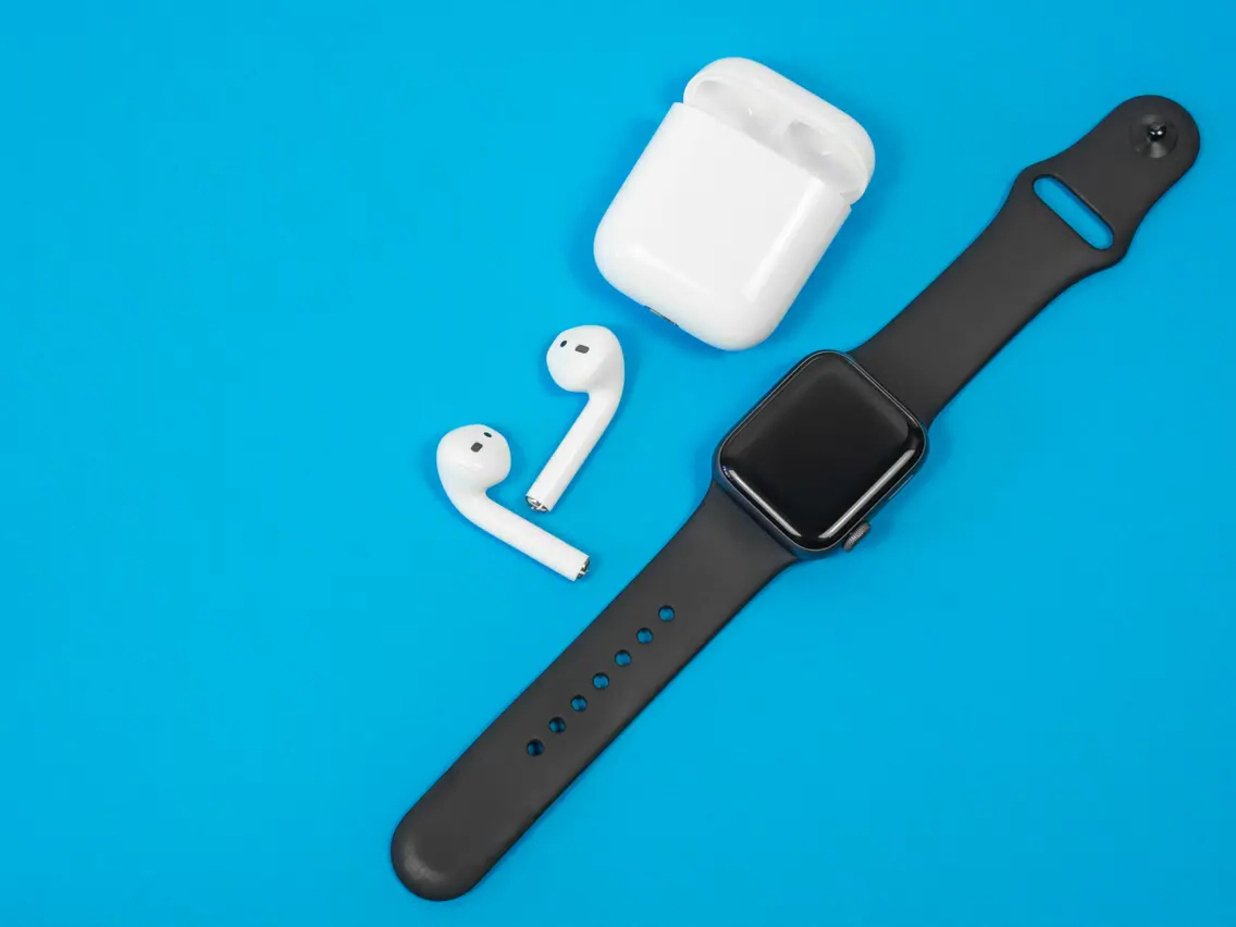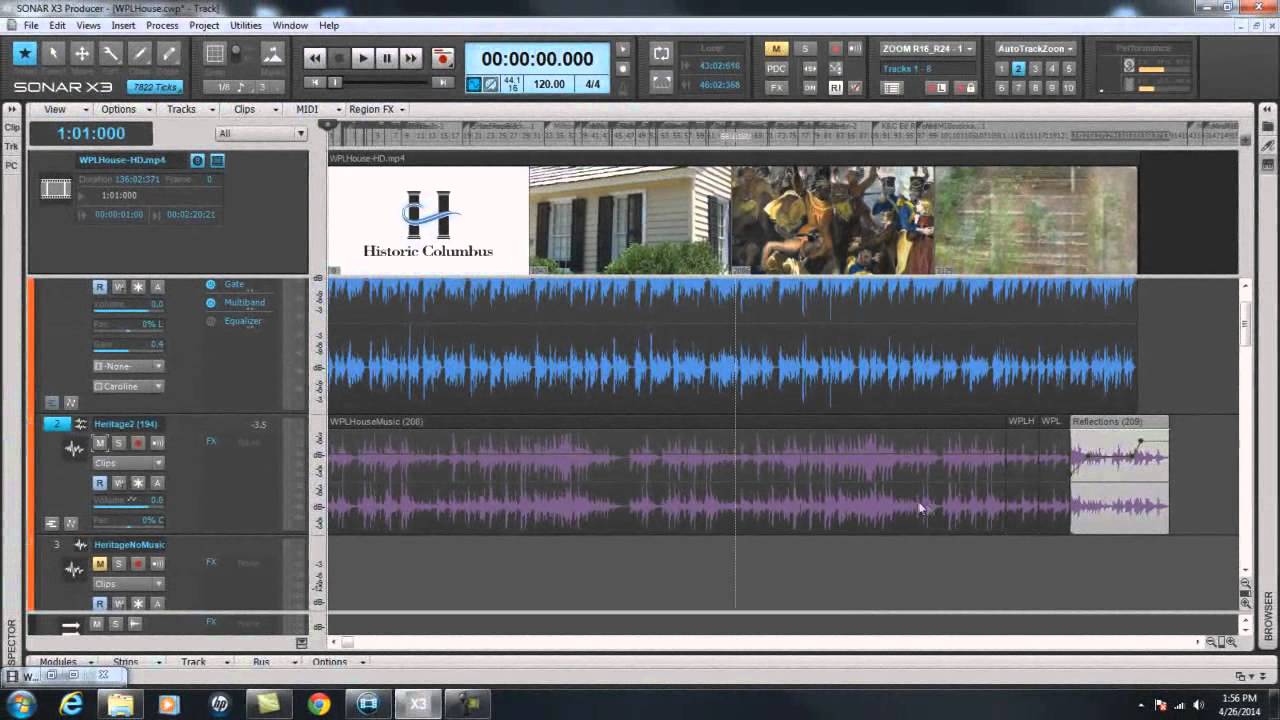Home>Devices & Equipment>Streaming>How Many GBs Do I Use For Streaming Music?


Streaming
How Many GBs Do I Use For Streaming Music?
Modified: March 9, 2024
Discover how much data streaming music consumes and learn how to optimize your usage. Find out the best streaming options for your data plan.
(Many of the links in this article redirect to a specific reviewed product. Your purchase of these products through affiliate links helps to generate commission for AudioLover.com, at no extra cost. Learn more)
Table of Contents
Introduction
Streaming music has become an integral part of our daily lives, offering a vast library of songs at our fingertips. Whether you're jamming out to your favorite tunes during a workout, unwinding with soothing melodies after a long day, or simply enjoying music as you go about your routine, the convenience and accessibility of streaming platforms have revolutionized the way we consume music. However, amidst the seamless experience of queuing up tracks and exploring new artists, there's a crucial aspect that often goes unnoticed: data usage.
As we delve into the world of streaming music, it's essential to understand the impact it has on our data consumption. With the prevalence of mobile devices as primary music players, the question "How many GBs do I use for streaming music?" arises frequently. This query is not only relevant for those on limited data plans but also for anyone concerned about optimizing their data usage and avoiding unexpected overage charges.
In this comprehensive guide, we'll explore the intricacies of streaming music data usage, shedding light on the factors that influence it and providing valuable insights into monitoring and managing data consumption. By the end of this journey, you'll be equipped with the knowledge to make informed decisions about your streaming habits, ensuring that your music-filled moments remain uninterrupted while staying mindful of your data usage. So, let's embark on this exploration of the data landscape within the realm of streaming music, uncovering the nuances that shape our digital audio experiences.
Understanding Streaming Music Data Usage
When it comes to streaming music, data usage is a pivotal aspect that warrants attention. Understanding how streaming music impacts data consumption is essential for optimizing your digital audio experience. Streaming music services utilize data to deliver high-quality audio content to your device in real-time. The amount of data consumed during this process is influenced by various factors, including the streaming quality, duration of usage, and the number of tracks played.
Streaming music quality directly impacts data usage. Higher quality settings, such as high-definition audio, result in larger amounts of data being transmitted. On the other hand, lower quality settings consume less data but may compromise audio fidelity. It's important to strike a balance between audio quality and data usage based on your preferences and available data allowance.
The duration of music streaming sessions also plays a significant role in data consumption. Longer listening periods naturally result in higher data usage. Whether you're enjoying an extended playlist during a commute or streaming music throughout the workday, the cumulative effect of prolonged usage can substantially impact your data usage over time.
Furthermore, the number of tracks played during a streaming session contributes to data consumption. Each track requires data to be transmitted to your device, and this data usage accumulates as you explore different albums, playlists, and artists. The diversity of your music choices and the frequency of track changes can influence the overall data consumption during your streaming sessions.
Additionally, the type of device and the streaming platform used can affect data usage. Different platforms and devices may employ varying compression techniques and data transmission protocols, leading to differences in data consumption. Understanding these nuances can help you make informed decisions about the most data-efficient ways to enjoy your favorite tunes.
By comprehending the intricacies of streaming music data usage, you can gain valuable insights into how your music consumption habits impact your data allowance. This understanding empowers you to make conscious choices about streaming quality, duration of usage, and the diversity of tracks played, ultimately enabling you to optimize your data usage while indulging in a seamless and enriching musical experience.
Factors Affecting Data Usage
When it comes to streaming music, several factors intricately influence data usage, shaping the digital audio experience and impacting the consumption of data. Understanding these factors is crucial for optimizing data usage while enjoying uninterrupted access to your favorite tunes.
Streaming Quality:
The streaming quality setting directly impacts the amount of data consumed during music playback. Opting for higher quality settings, such as high-definition audio, results in larger data usage due to the transmission of more detailed and refined audio content. Conversely, lower quality settings consume less data but may compromise the audio fidelity. Balancing the desire for high-quality audio with mindful data usage is essential for a personalized streaming experience.
Duration of Usage:
The duration of music streaming sessions significantly influences data consumption. Extended listening periods naturally lead to higher data usage. Whether you're immersed in a lengthy playlist during a commute or enjoying music throughout the day, the cumulative effect of prolonged usage can substantially impact your data consumption over time.
Number of Tracks Played:
Each track played during a streaming session contributes to data consumption. As you explore different albums, playlists, and artists, the data usage accumulates with each track change. The diversity of your music choices and the frequency of track changes directly impact the overall data consumption during your streaming sessions.
Device and Streaming Platform:
The type of device and the streaming platform used can also affect data usage. Different platforms and devices may employ varying compression techniques and data transmission protocols, leading to differences in data consumption. Understanding these nuances empowers users to make informed decisions about the most data-efficient ways to enjoy their favorite tunes.
By recognizing these factors, individuals can gain valuable insights into how their music consumption habits impact their data allowance. This understanding enables them to make conscious choices about streaming quality, duration of usage, and the diversity of tracks played, ultimately optimizing data usage while indulging in a seamless and enriching musical experience.
How to Monitor and Manage Data Usage
Monitoring and managing data usage while streaming music is essential for maintaining control over your data consumption and avoiding unexpected overage charges. By implementing proactive strategies and leveraging available tools, you can effectively monitor and optimize your data usage, ensuring a seamless and uninterrupted music streaming experience.
Data Monitoring Tools:
Utilize the data monitoring features provided by your streaming music service or mobile network provider. Many streaming platforms offer built-in data usage tracking, allowing users to monitor their consumption patterns and adjust settings accordingly. Additionally, mobile network providers often offer data usage tracking tools through their mobile apps or online portals, enabling users to stay informed about their data usage in real-time.
Streaming Quality Settings:
Adjust the streaming quality settings based on your preferences and data allowance. Most streaming platforms allow users to customize the audio quality, offering options to conserve data without compromising the listening experience. By opting for lower quality settings when on a limited data plan or in data-constrained situations, you can effectively manage your data usage while still enjoying your favorite tracks.
Offline Playback:
Take advantage of offline playback features offered by streaming platforms. Many services allow users to download music for offline listening, reducing the need for continuous data streaming. By downloading your favorite albums, playlists, or tracks while connected to Wi-Fi, you can enjoy uninterrupted music playback without consuming additional data during subsequent listening sessions.
Data Usage Alerts:
Enable data usage alerts provided by your mobile network provider. These alerts notify you when you approach or exceed your data allowance, empowering you to make informed decisions about your streaming habits. By staying vigilant and responsive to these alerts, you can proactively manage your data usage and avoid potential overage charges.
Wi-Fi Connectivity:
Leverage Wi-Fi connectivity whenever possible to conserve mobile data. Streaming music over Wi-Fi networks instead of relying solely on cellular data can significantly reduce your mobile data consumption. Whether at home, in the office, or at public hotspots, prioritizing Wi-Fi connectivity for music streaming can contribute to efficient data management.
Data-Saving Mode:
Explore data-saving modes offered by streaming platforms and mobile devices. These modes are designed to optimize data usage by employing advanced compression techniques and minimizing data transmission without compromising audio quality. By activating data-saving modes, you can streamline your data consumption while enjoying uninterrupted music streaming.
By implementing these proactive measures and leveraging available tools, you can effectively monitor and manage your data usage while streaming music. This proactive approach empowers you to optimize your data consumption, ensuring a harmonious balance between your music-filled moments and mindful data usage.
Conclusion
In conclusion, the landscape of streaming music data usage encompasses a myriad of factors that intricately shape our digital audio experiences. By delving into the nuances of data consumption, we've gained valuable insights into the impact of streaming quality, duration of usage, track diversity, and device/platform variations on data usage. Understanding these factors empowers individuals to make informed decisions about their streaming habits, striking a harmonious balance between audio quality and mindful data usage.
As we navigate the realm of streaming music, it becomes evident that proactive data monitoring and management are essential for optimizing data consumption. Leveraging data monitoring tools, adjusting streaming quality settings, utilizing offline playback features, and staying vigilant with data usage alerts are proactive strategies that enable individuals to maintain control over their data usage while indulging in uninterrupted music streaming.
Furthermore, the significance of Wi-Fi connectivity and data-saving modes cannot be overlooked. Prioritizing Wi-Fi networks for music streaming and activating data-saving modes contribute to efficient data management, allowing individuals to conserve mobile data without compromising their music listening experiences.
Ultimately, the journey through the intricacies of streaming music data usage culminates in an empowered understanding of how to enjoy music seamlessly while being mindful of data usage. By implementing the insights garnered from this exploration, individuals can curate their music-filled moments with confidence, knowing that they have the knowledge and tools to optimize their data consumption.
In the ever-evolving landscape of digital audio consumption, the ability to navigate data usage with mindfulness and control ensures that the seamless enjoyment of music remains a constant in our daily lives. With a nuanced understanding of streaming music data usage and proactive data management strategies at hand, individuals can embark on their musical journeys with the assurance of a harmonious balance between their digital audio experiences and mindful data usage.











